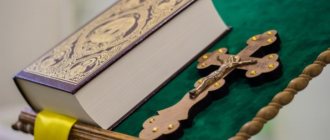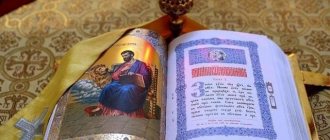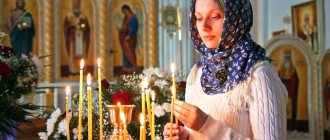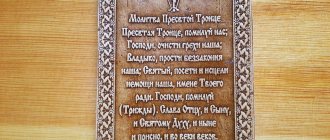Namaz is the second pillar of Islam
Namaz is one of the foundations of the religion of Islam. With its help, the connection between man and the Almighty is established. Prophet Muhammad (peace and blessings of Allaah be upon him) said: “Know that the best of your deeds is prayer!” Reading prayer five times a day helps a person strengthen his faith each time, cleanse his soul from committed sins and protect himself from future sins. Another hadith says: “The first thing a person will be asked about on the Day of Judgment is about performing prayer on time.”
Before each prayer, a true Muslim performs ablution and appears before his Creator. In morning prayer, he exalts Allah, endlessly asserting His exclusive right to worship. A believer turns to the Creator for help and asks Him for a straight path. As proof of submission and loyalty, a person bows to the ground before the Almighty.
Whose duas may Allah not answer?
“A man on a long journey, with disheveled hair and covered in dust, will raise his hands to the sky, crying, “Oh, Lord! Oh Lord! But his food is haram, his drink is haram, and he was raised on haram. So how will his dua be accepted?”
Read also: Very realistic dreams
(Muslim, zakat: 19; Tirmidhi, tafsir: 3)
A person’s bad deeds reduce the strength of his dua, so it is very important to do as many good deeds as possible so that they cover up the bad ones, and then your dua will be stronger and rise very high. In other words, the strength of your dua directly depends on you, on your position before Allah. From your sincerity and faith in what you do.
Prostration and straightening
- Then he pronounces the words of takbir and falls prostrate in prostration.
And the first thing that touches the ground is the knees, then the hands [Recited by Abu Dawud], then the forehead and nose. At the same time, he places his palms on the ground at ear or shoulder level. He turns his fingers towards the Qibla, raises parts of his arms from the hands to the elbows from the ground, moves his forearms (from the elbow to the shoulders) away from his sides [Recited by al-Bukhari],
and also moves the stomach away from the thighs and says: “Subhyana Rabbiyal-A'lya” three times. In this position, you should try to make du'a as much as possible. [Reported by Muslim]
- Then, pronouncing the words of takbir, he raises his head (but does not raise his hands) and sits in the form of al-iftirash, that is, he spreads his left leg and places his right [Recited by Muslim]. In this case, the toes of the right foot are directed towards the Qibla.
The hands should be placed on the thighs of the legs in an open form, palms down, and point the fingers towards the Qibla.
And at the same time he says: “Allahumma-gfir li, wa-rhyam-ni, wa-jbur-ni, wa-khdi-ni, wa-rzuk-ni” (Oh, Allah, forgive me, and have mercy on me, and compensate me, and lead me to the right path, and grant me a means of livelihood) [Reported by at-Tirmidhi].
If he confines himself to the words “Allahumma-gfir li ,” then this will be enough.
- Then, pronouncing the words of takbir, he makes a second prostration, which is similar to the first.
- Then, according to some scholars, it is advisable to sit for a while in jalsat al-istiraha (resting seat).
Since in the hadith of Malik bin al-Huweiris, in the description of the prayer of the prophet, peace and blessings of Allah be upon him, it is said that he “rose to his feet only after straightening up while sitting” [Recited by al-Bukhari].
However, it should be noted that, according to the majority of representatives of the madhhabs, this type of sitting is not a desirable element, except out of necessity due to old age, illness, etc.
“Then, pronouncing the words of takbir, he rises to perform the second rakat, leaning on his hands. [Reported by al-Bukhari]
“Then he performs the second rak’at in the same way as he performed the first. However, at the same time he should not pronounce the words “A'uzubillahi mina-sh-shayt1ani r-rajim”, nor the words du'a al-istiftah.
Du'a al-istiftah and reading Surah al-Fatiha
- Then he lowers his gaze and looks at the place of prostration, and then says: “Subhana-ka, Allahumma, wa bi-hamdi-ka, wa tabaraka ismu-ka wa ta'ala jaddu-ka wa la ilaha geyru-ka”
( glory to You, O Allah, and praise to You, blessed is Your name, above all is Your greatness and there is no god but You). [Reported by Muslim]
- Then he says to himself: “A'uzubillahi mina-sh-shayt1ani r-rajim”, “Bismillahi R-Rahmani R-Rahim”
(“I take refuge in Allah from the shaitan who is stoned”, “in the name of Allah, the Beneficent, the Compassionate”). [Reported by Muslim]
“Then he reads Surah al-Fatihah [Reported by al-Bukhari], and then says “Aamin ,” which means “O Allah, answer.”
“Then after that he reads some surah or some verses from the Koran in the first two rak'ahs of each prayer. And this should be done out loud in morning prayer, as well as in the first two rak'ahs of evening and night prayer.
Prayer time
Each prayer must be performed at a strictly defined time, not earlier and not later. But if, having been late for the time of performing the prayer, it can be made up before the next prayer, then the prayer read before the due time will not be counted from above. It is also prohibited to perform prayer in three periods of the day - during dawn, until the sun rises and turns yellow, during the time when the sun is at its zenith, and also during the evening dawn. How many prayers per day should you perform?
- Fajr time begins at dawn and lasts until sunrise. It correlates with the beginning of spring, with the time when nature wakes up after winter hibernation, and reminds of the purity of thoughts and intentions throughout the day.
- Zuhr time is at noon. This time is associated with the middle of summer, when a person must realize the fullness of goodness from the godly deeds committed at that time and ask for forgiveness (by prayer) for unwittingly or unwittingly committed unseemly deeds.
- Asr time falls in the second half of the day, which is associated with the onset of old age, and is considered the best time to complete the activities assigned for that day and make plans for the new day.
- Maghrib time (after sunset) symbolizes the onset of darkness, in which the believer’s soul is too vulnerable, thus calling him to suppress carelessness and show attentiveness in deeds and thoughts.
- Isha time (the onset of night) is considered the best time for a cleansing prayer, washing away unwanted actions and voluntary or involuntary sins of a Muslim accumulated throughout the day, and a prayer read at this time will give the protection of the Almighty and His grace for the coming day.
We recommend reading → Scheme for performing namaz: what daily prayer consists of
Mandatory conditions for performing prayer
The prerequisites for performing namaz are:
- Confession of Islam to those praying - a prayer read by a non-believer will be heard by Allah, but not accepted, because it was not read by faith, but by desire;
- Coming of age according to the canons of Sharia (occurs upon reaching puberty), as well as the spiritual fullness of the person praying;
- The prayer must be read at a strictly defined time;
- It is necessary to have taharrat (ritual ablution), clean clothes and a clean room for reading prayer;
- Observance of aurat (hiding of necessary parts of the body);
- The direction of the face of the person praying should be strictly towards the Kaaba;
- Pure intention to read namaz, what is it? This is the intention expressed before reading the first rak'ah. Forms of prayers
We recommend reading → Performing prayer for travelers - rules and customs
All prayers are divided into obligatory (farz), optional (sunnah), necessary (wajib) and additional (nafl). Fard is vividly represented by the five daily prayers that every Muslim should recite. Sunnah, which means optional prayer, is read at the request of the Muslim, but it is recommended to read it at each of the five obligatory prayers. Wajib is considered necessary to perform, but wajib is inferior in importance to fard. Nafl prayers are read outside the main five daily prayers, but nafl prayer is the best way in Islam to receive more sawab (grace).
At-tashahhud
After he has completed the first two rak'ahs, he sits down for the first tashahhud in the form of al-iftirash. At the same time, he places his hands on his thighs without clenching his left hand into a fist.
As for the right hand, he presses the little finger and ring finger to the palm, connects the middle finger with the thumb in the form of a ring and points with the index finger.
In this case, you should keep your gaze on the index finger.
Sitting in this position, he says: “At-tahiyyatu li-Llahi, wa-s-sala-uatu wa-t-tayibat, as-salamu 'alay-kya, ayu-ha-n-nabiyyu, wa rahmatu-Llahi wa barakatu-hu, as-salamu 'alay-na wa 'ala 'ibadhi-llahi-s-sali-hyina. Ashhadu alla ilaha illallahu wa ashhadu anna Muham-madan 'abdu-hu wa rasulyu-hu”
(Greetings to Allah, and prayers, and the best words. Peace be upon you, O Prophet, the mercy of Allah and His blessings, peace to us and the righteous servants of Allah. I testify that there is no god but Allah, and I testify that Muhammad is His servant and His messenger). [Reported by al-Bukhari]
- Then, pronouncing the words of takbir, he rises if the prayer exceeds two rak'ats.
And in the remaining rak'ahs one should not read anything from the Koran other than Surah al-Fatiha.
— And in the last seat of at-tashahhud, he sits, according to a group of scholars, in the form of “at-tawarruk” [Recited by Abu Dawood].
The essence of at-tawarruk is as follows: place your left leg under yourself so that it looks out from the right side, lean on your left thigh and leave your right leg just as it stood in the al-iftirash seat.
Then he says what he said in the first sitting of at-tashahhud, but at the same time he adds the following: “Allahumma salli 'ala Muhammadin wa 'ala ali Muhammadin, kama sallayta 'ala Ibrahima wa 'ala ali Ibrahima, inna-ka Hamidun, Majidun. Allahumma, barik 'ala Muhammadin wa 'ala ali Muhammadin kama barakta 'ala Ibrahima wa 'ala ali Ibrahima, inna-ka Hamidun, Majidun”
(O Allah, bless Muhammad and the family of Muhammad, as You blessed Ibrahim and the family of Ibrahim, verily, You are Praiseworthy, Glorious! O Allah, send blessings to Muhammad and the family of Muhammad, as You sent them to Ibrahim and the family of Ibrahim, verily. You are Worthy of praise, Glorious!) [Recited from al-Bukhari].
- Then it is advisable to say: “Allahumma, inni a'uzu bi-ka min 'azabi-l-kabri, wa min 'azabi jahanna-ma, wa min fitnati-l-makhya wa-l-mamati wa min sharri fitnati-l -masihyi-d-dajjali”
(O Allah, verily, I seek refuge in You from the torments of the grave, from the torments of hell, from the temptations of life and death, and from the evil temptations of the Antichrist) [Narrated by al-Bukhari].
- You can also say: “Allahumma, inni za'alamtu nafsi zu'lman kasiran, wa la yagfiru-z-zunuba illya Anta, fa-gfir li magfiratan min 'indikya wa-rhyam-ni, inna-ka Anta-l-Gafuru-r-Rahim “ (O Allah, verily, I have treated myself unfairly many times (that is, I have sinned), and no one forgives sins except You! Forgive me, and grant me Your forgiveness and have mercy on me, verily, You are the Forgiving One , Merciful!). [Reported by al-Bukhari].
How to dress for Namaz
Clothes for performing namaz should hide the necessary parts of the body, and also should not reveal these parts of the body during prayer. Also, clothing should not be transparent, so that even the color of the skin cannot be determined through it. For men, it is recommended to wear special clothing called kamis during prayer, but this is not mandatory. Modest clothing, not painted in bright colors, and not violating the aura (not revealing the private parts of the body during the movements provided for in prayer) is suitable.
When performing namaz, women should dress modestly, leaving only the oval of the face exposed (the chin should be covered), as well as the hands. Some madhhabs (for example, Hanafi) allow bare feet, but this is undesirable. A woman’s clothing should also not be see-through, nor should it be of such length that during prayer, none of the covered parts of the body would be exposed. In this case, the prayer will be considered rejected.
Waist bow and straightening
Then he pronounces the words of takbir, bows from the waist and places his palms on his knees, while opening his fingers, thereby clasping his knees.
His head and back are straight. Then he says: “Subhyana Rabbia l-'Azym” (“glory to my Great Lord”) three times. [Reported by at-Tirmidhi]
- Then he, straightening up, says (imam and munfarid): “Sami'a Allahu liman hamidahu” (“may Allah hear the one who praised Him”) [Related by at-Tirmidhi].
And then you should say (to everyone: imam, ma1mumu and munfarid): “Rabba-na, wa la-ka-l-hamdu mil1a-s-samauati, wa mil1a-l-ardy, wa ma baina-huma, wa mil1a ma shi1ta min shayin ba'du”
(Our Lord, praise be to You, and may it fill the heavens, the earth, what is between them, and whatever else You desire). [Reported by at-Tirmidhi]











